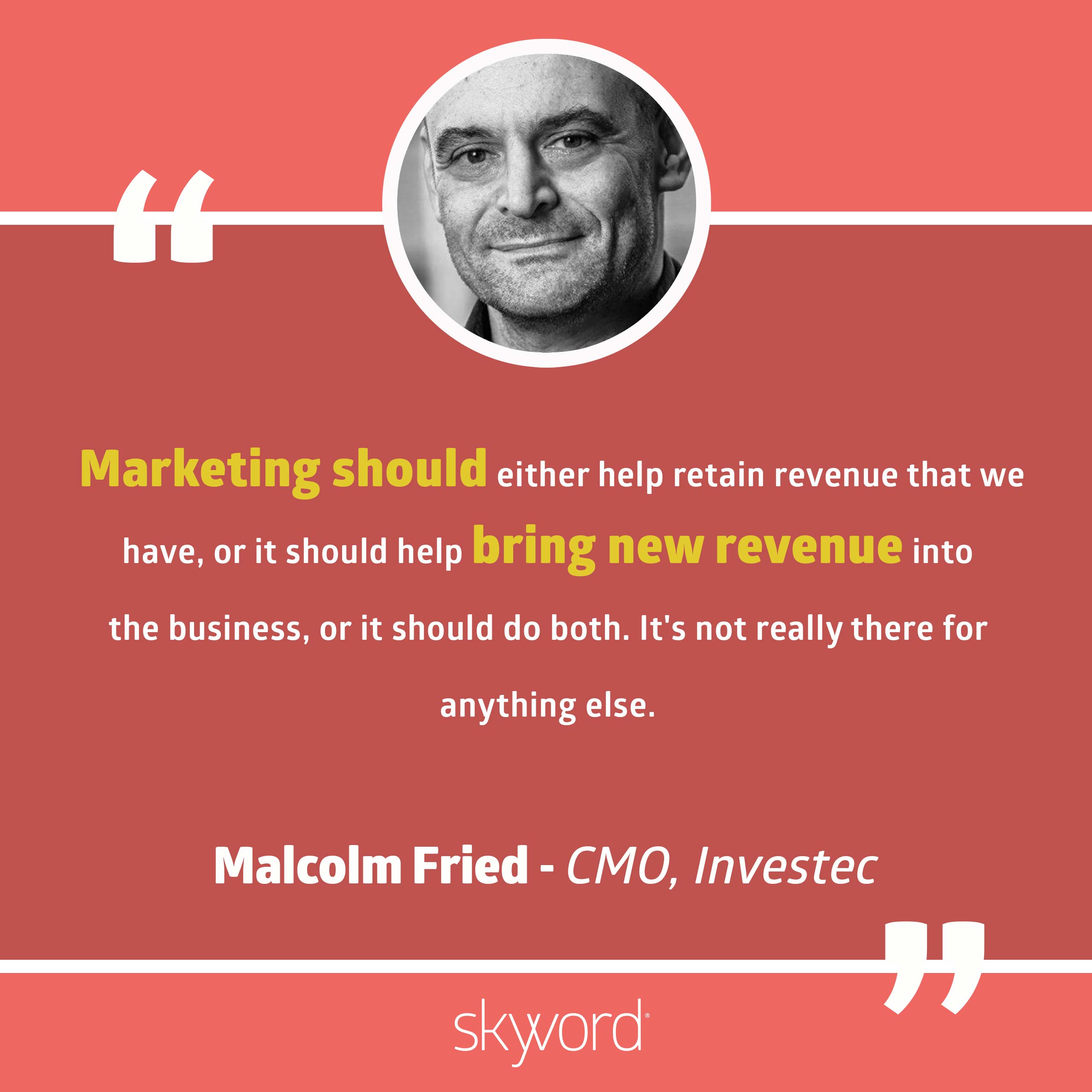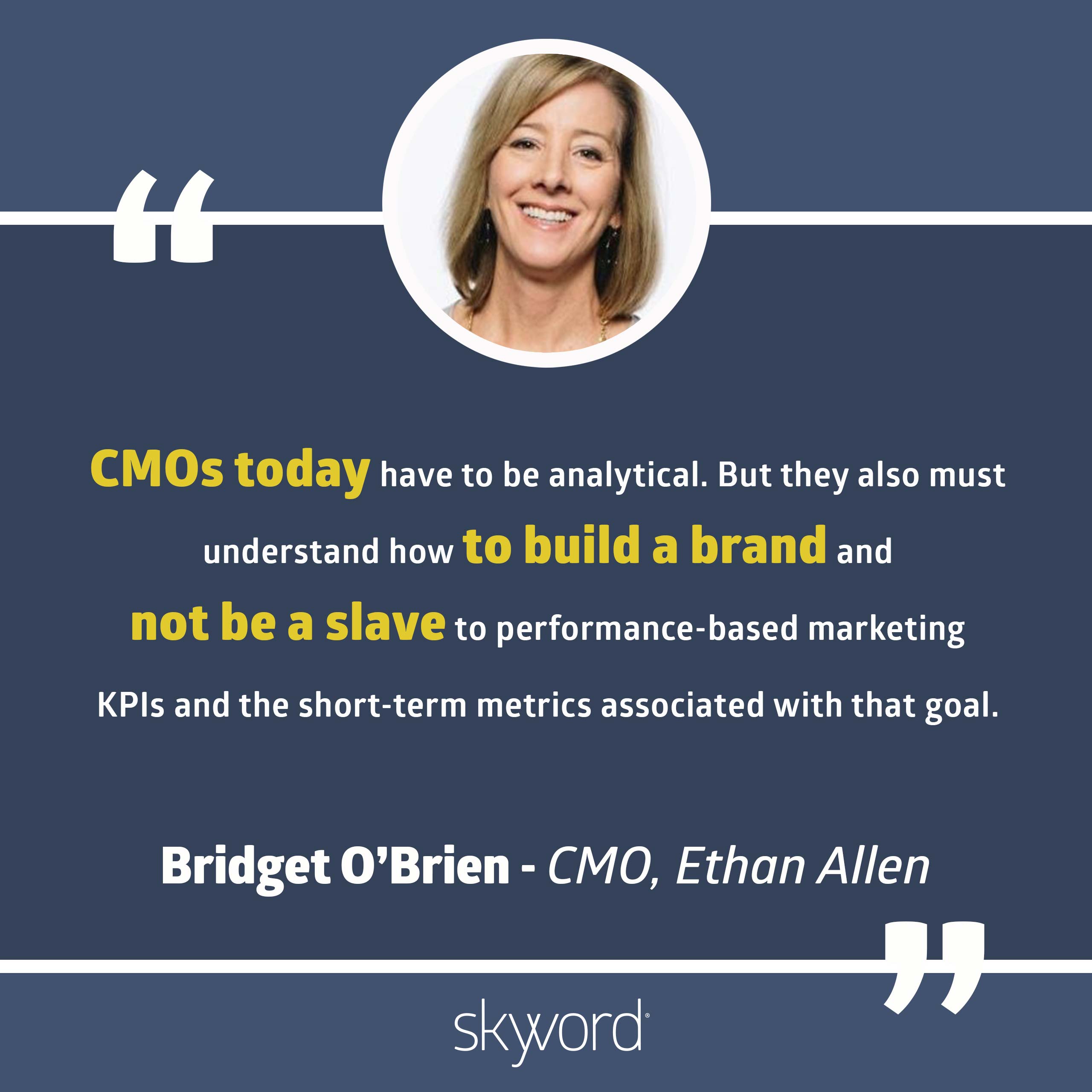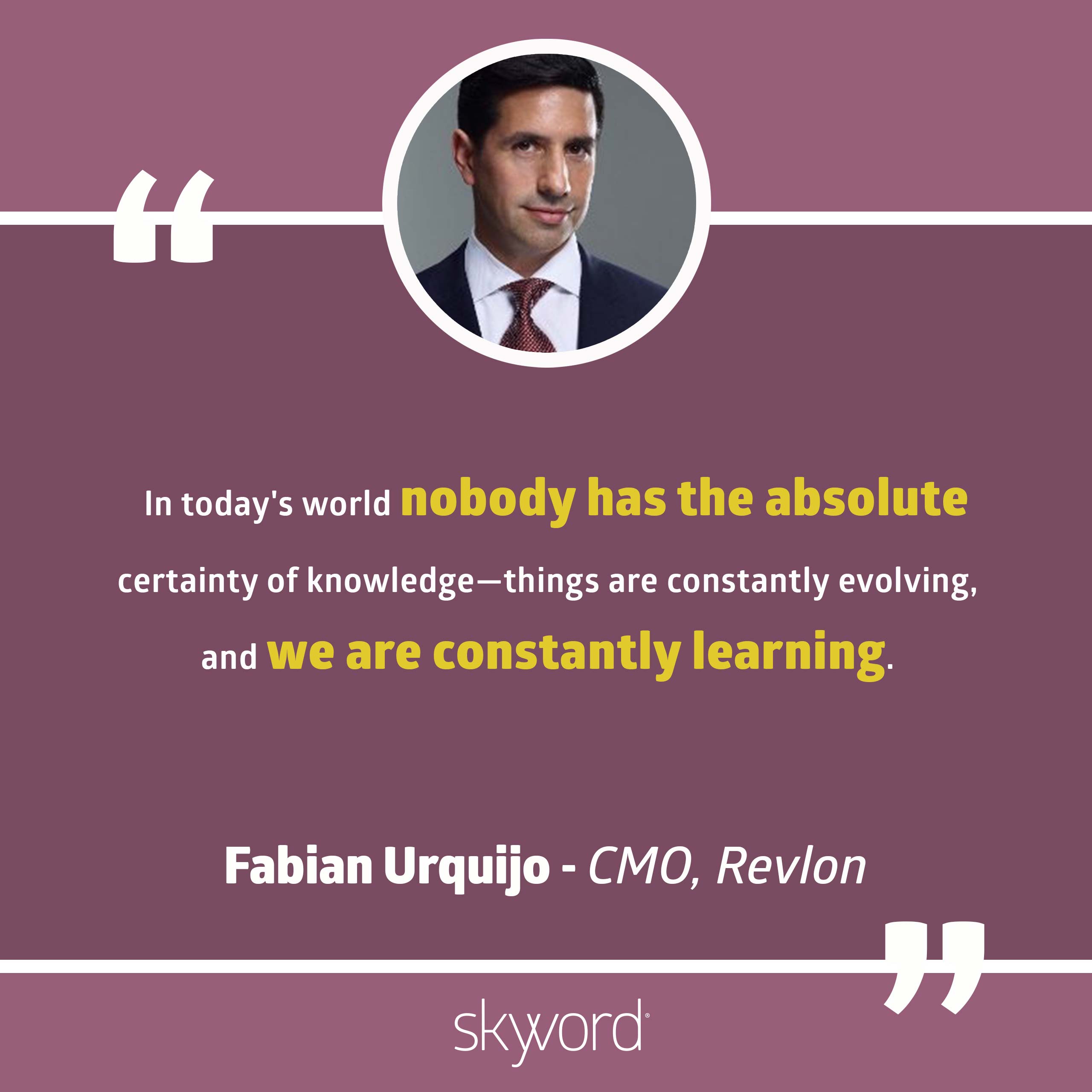Creativity
Balancing Art and Science: The Modern CMO’s Experience in Driving Revenue
By Lauren McMenemy on April 20, 2018
All around the world, people are transforming marketing teams, challenging the view that marketing does fluffy, non-revenue-generating work, and leading the way using data and analytics. And still business leaders call marketing a cost center instead of a revenue driver.
Or do they? In part one of this series, after exploring the concept of the revenue marketer, I asked whether it's marketers ourselves that are holding marketing back from being seen as an important strategic partner that drives revenue and growth. After speaking with leading CMOs from across the marketing divide, it's clear that that's not the case. If anything, the modern CMO is battling on a different front: balancing the art of creative marketing while proving ROI and generating leads.
And here is the thing: This marketing transformation has been happening for years, since that first piece of martech hit the shelves. These days every organization has a CRM at the very least, maybe even a brand health tracker or a content marketing system. The language of data, of ROI, has become commonplace in marketing teams as they grow data scientist roles, sometimes at the expense of creative ones. CMOs know their role is about driving demand; modern science just lets them prove their worth to the board.
Malcolm Fried, CMO of Investec Group, says his company is "very clear" on the role marketing plays in the business: "Marketing should either help retain revenue that we have, or it should help bring new revenue into the business, or it should do both. It's not really there for anything else. We struggle with any other definition of marketing's purpose.
"What data and analytics give us as marketers, and what they give everybody, is a keener ability to measure outcomes and to be more accountable. In marketing not everything can be measured, and probably not everything should be measured, but where we can produce KPIs, we try, because it's better to be accountable than not. After all, we're dealing with shareholder money, we're dealing with scarce capital, we're dealing with costs, so we're going to be responsible and accountable for it."

Marketing Must Be Transparent and Prepared
That conversation around the role of data in the modern marketing organization is not a new one; it's been the dominant debate for years now. B2B organizations, though, can sometimes lag behind their B2C counterparts in adopting these new technologies. Fried believes the first order is to understand what that data actually does and to prepare the balance of art and science: "In the world generally, not just in marketing, the notion of digital and data is sometimes overwhelming, so let's take the trouble to understand what we're talking about. And then let's take the trouble to understand what the objective is-it may not be that complicated to get there. And the final point: Let us understand that it's a combination of creative marketing plus technological platforms that is needed to get us there, and those are two very different things. Absent technology platforms, we often can't do what we want to do even though intellectually we know we have to be 'digital,' if you like. We need those two things.
"It's a journey-it's quite a long journey for many of us-and it requires patience and discipline. One doesn't go from being a Luddite in this world to living in the 22nd century by next Tuesday. These elements are all important, but the first element to us is self-reflection, understanding, and a deep study of the area so we know what we're talking about and can be effective."
Image attribution: nappy
It's also important, Fried says, to be transparent as a marketer and to be prepared: "We don't want to have conversations based on purely a gut feel, purely personal anecdotes, personal preference. Those are actually the difficult conversations-fruitless, really."
Which brings it all back to the numbers: "It's always less difficult and less fraught to have that conversation about numbers when you can show outcomes and some kind of return on their investment. And if one can show those outcomes in qualitative or quantitative ways, it becomes an interesting discussion rather than a discussion about how marketing is some kind of weird vanity spend or a cost center.
"Sometimes it may be that brand communications or classic advertising is used as a synonym for marketing. We know it's often difficult to measure return on an awareness campaign. One can put the metric of a brand tracker over that and measure the health of the brand over time, that is a qualitative outcome, but perhaps one has to separate the various initiatives within marketing. Really, brand communications is just one of many marketing initiatives, and it's often the most difficult to measure."
Short-Termism Is a Blight on Marketing Strategy
That's something Bridget O'Brien, CMO at Ethan Allen, strongly believes, too. Having worked in high-value B2B software firms before her current B2C role, O'Brien has remained convinced of the duality of marketing: the creative, and the analytical.
"I'm a very transparent marketer and my goal is to ensure that the executive team understands what we are trying to achieve from a marketing standpoint. We consistently share our performance metrics often-whether they are good or bad," she says. "I take a very hypothesis-driven approach and then test and learn along the way. When you bring executives through that journey, they get the visibility and confidence that the process is well thought out and scientific and analytical in nature.
"Because there is still an art and science to marketing. When it comes to pure brand building, it becomes a bit harder to simply focus on the numbers. More and more, CEOs are learning the value of having a defendable and valuable brand position. If they only focused on revenue generation at the expense of building long-term brand equity, they will pay the price in the end."
In O'Brien's experience, where a B2B brand is working at a very high price point, such as an enterprise software company, the marketing team can end up supporting direct sales teams. But that's not the case with all B2B companies; O'Brien cites IBM's content and influence as an example of a B2B company that is truly delivering marketing transformation.
"As CMOs we're responsible for driving revenue. If you only look at it from a short-term standpoint and don't make investments that build the brand or create brand experiences that may not actually create revenue events immediately, it's very easy to get into a commoditized situation. It's about having a vision and understanding what makes your brand unique, and what are you going to do to demonstrate that uniqueness. What the brand stands for and the experiences that consumers have with the brand are what help to distinguish it.
"If you're not making money you won't survive, but if you just develop your marketing strategy with the short term in mind, you are missing a tremendous amount of opportunity to create even greater value and loyalty and revenue holistically in the long term."
O'Brien points out it's been getting so much easier to keep tabs on the short-term as martech helps you track quarter by quarter, or week by week. That keeps the focus on now and next month, not next year. "It's having that vision, that strategy and that road map that takes you beyond the next quarter," she says. "I think having five- and ten-year visions is almost unreasonable because the world changes, but have at least a three-year vision and place big rocks, know what you need to accomplish those milestones versus looking at it quarter to quarter.
"Ultimately marketing should be a revenue driver, and a variety of short- and long-term strategies and tactics can be deployed to achieve revenue growth. CMOs today have to be analytical. But they also must understand how to build a brand and not be a slave to performance-based marketing KPIs and the short-term metrics associated with that goal."

Revenue Starts With a Consumer Choice
It's easy to say that; it's harder to not focus on the short term when you have to take quarterly financial reports to the board to justify your spend. Perhaps this is why we find more and more insight-driven CMOs reaching the top table-people like Fabian Urquijo, Revlon's CMO. Urquijo has a long history of working in insights and customer data, arguably making him the perfect modern CMO. He is the voice of the customer and the driver of growth.
Image attribution: Kaboompics
"I've never been in a situation where marketing wasn't believed to be a revenue driver," Urquijo says. "If you go back, if you take a look at what we do in marketing, we understand the consumers, we get consumer insights, we create products-but then we need to make sure we drive the influence and the persuasions so that those consumers buy the products we create, and that by definition is moving the top line. That is driving revenue.
"I would say revenue starts with a consumer choice, and the best informed in your company around consumer preferences is your marketing team. Enable them to go and experiment and to make them accountable for driving the top line. Enable your marketers, trust them, make them accountable, and allow them to experiment. In today's world nobody has the absolute certainty of knowledge-things are constantly evolving, and we are constantly learning. Accelerate your failure rate. Failure is exactly what happens before success-you just need to stay at it."

Urquijo is passionate about marketing and its role in driving business growth. His experience comes from brand management and marketing director roles in large FMCG multinationals, so he knows a thing or two about what makes a customer tick. It's why he believes the modern marketing team absolutely must be a reflection of customer need-the voice of the customer in the boardroom. Like O'Brien, Urquijo talks of the commoditization of brands, and how fewer barriers to distribution are introducing more and more brands to the customer's choice.
"As marketers we need to be the thermometers of where customer needs are," he says. "I've seen other companies, and I've seen ourselves evolve from 'I have this product, what do I do with it?' to 'They have this need.' Today we must sell by needs and benefits."
Direct Your Marketing Orchestra for Transformation
Urquijo says the discussion around marketing as a revenue driver should go away because it's more obvious today what marketing can bring to an organization. Distribution and getting things on shelves is now not the only way to sell your products; the battle is for consumer choice, he says, and that is where marketing absolutely must play a role because "sales don't know how to influence consumer choice."
"The whole sales process happens online today, and it all could happen in a very measurable way. It's a function of skills, knowledge, and integration of platforms that only marketing knows. As a marketing leader you become like a director of an orchestra, bringing in creative, data, technology. Put it all in sync, and it's really difficult to argue against the value of marketing and how that drives sales."
That marketing drives revenue is now a given, and CMOs are incorporating new technologies and old sciences to speak the language of the top table. As they do so, they run the risk of becoming too focused on the short term and on the numbers. Leading CMOs must now rein in the need for short-term data while remaining true to the old arts of brand building as they're transforming marketing. Data and creativity, art and science: This is the true battlefront of the modern CMO.
For more stories like this, subscribe to the Content Standard newsletter.
Featured image attribution: Victoria Heath



